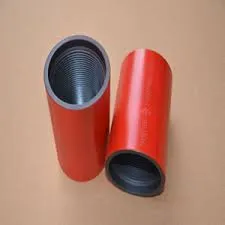- Afrikaans
- Albanian
- Amharic
- Arabic
- Armenian
- Azerbaijani
- Basque
- Belarusian
- Bengali
- Bosnian
- Bulgarian
- Catalan
- Cebuano
- Corsican
- Croatian
- Czech
- Danish
- Dutch
- English
- Esperanto
- Estonian
- Finnish
- French
- Frisian
- Galician
- Georgian
- German
- Greek
- Gujarati
- Haitian Creole
- hausa
- hawaiian
- Hebrew
- Hindi
- Miao
- Hungarian
- Icelandic
- igbo
- Indonesian
- irish
- Italian
- Japanese
- Javanese
- Kannada
- kazakh
- Khmer
- Rwandese
- Korean
- Kurdish
- Kyrgyz
- Lao
- Latin
- Latvian
- Lithuanian
- Luxembourgish
- Macedonian
- Malgashi
- Malay
- Malayalam
- Maltese
- Maori
- Marathi
- Mongolian
- Myanmar
- Nepali
- Norwegian
- Norwegian
- Occitan
- Pashto
- Persian
- Polish
- Portuguese
- Punjabi
- Romanian
- Russian
- Samoan
- Scottish Gaelic
- Serbian
- Sesotho
- Shona
- Sindhi
- Sinhala
- Slovak
- Slovenian
- Somali
- Spanish
- Sundanese
- Swahili
- Swedish
- Tagalog
- Tajik
- Tamil
- Tatar
- Telugu
- Thai
- Turkish
- Turkmen
- Ukrainian
- Urdu
- Uighur
- Uzbek
- Vietnamese
- Welsh
- Bantu
- Yiddish
- Yoruba
- Zulu
Comparing Bull Plugs and Hex Plugs for Optimal Performance and Compatibility
Bull Plug vs. Hex Plug A Comprehensive Comparison
In the vast realm of plumbing and piping accessories, two components often come into discussion are bull plugs and hex plugs. While both serve similar purposes in sealing pipes and preventing leaks, they come with distinct designs and applications. This article aims to explore the differences, advantages, and uses of bull plugs and hex plugs, helping professionals and DIY enthusiasts make informed decisions when selecting the appropriate component for their plumbing system.
What is a Bull Plug?
A bull plug, often referred to as a round plug or pipe plug, is a type of plug with a rounded head. Typically constructed from materials like steel, brass, or plastic, bull plugs are designed to seal the end of a pipe or fitting. Their main advantage lies in their ability to create a tight seal without requiring extensive tools or effort. Bull plugs are frequently used in pipelines where a smooth surface is beneficial or necessary, and they can be easily installed by hand or with minimal effort.
What is a Hex Plug?
On the other hand, a hex plug is characterized by its hexagonal shape, which is designed to fit a hex wrench. Hex plugs are often made from similar materials—steel, brass, or plastic—and provide a robust sealing solution. The hexagonal design allows for greater torque, making it easier to tighten or loosen the plug compared to a round bull plug. This feature makes hex plugs particularly advantageous in applications where a strong seal is critical, such as in high-pressure or high-temperature environments.
Key Differences
The most glaring difference between bull plugs and hex plugs is their shape. Bull plugs have a rounded top, while hex plugs feature six flat sides for wrench fitting. This fundamental design difference influences several practical aspects
1. Installation and Removal Bull plugs can often be installed by hand or with basic tools. In contrast, hex plugs require a hex key or wrench for installation, making them slightly more complex in terms of assembly and disassembly.
bull plug vs hex plug

2. Seal Strength Hex plugs, due to their shape and the ability to apply more torque, generally provide a stronger seal, especially in high-stress applications. Bull plugs, while still effective, may not hold under extreme pressure as securely as hex plugs.
3. Aesthetic and Space Considerations Bull plugs may be preferred in visible applications due to their smooth appearance. They also take up slightly less space than hex plugs, which can be a significant consideration in cramped environments.
4. Cost and Availability While pricing can vary based on materials and specifications, bull plugs may be slightly more affordable or widely available than hex plugs. However, this can depend on the specific brand and local market conditions.
Applications
Bull plugs and hex plugs find their niches in various applications. Bull plugs are commonly used in plumbing and HVAC systems where ease of installation is a priority and visual aesthetics matter. They are ideal for sealing off unused ports in pipes.
In contrast, hex plugs are often employed in industrial settings that involve high pressures and temperatures, such as in oil and gas lines, chemical processing plants, and hydraulic systems. Their ability to provide a strong seal is essential in preventing leaks that could lead to costly downtime or dangerous situations.
Conclusion
In summary, when choosing between bull plugs and hex plugs, the decision largely depends on the specific requirements of the project at hand. Bull plugs offer simplicity and elegance for standard plumbing applications, while hex plugs provide superior sealing capabilities for more demanding environments. Understanding their differences, benefits, and suitable applications can help users make knowledgeable decisions, ensuring a reliable and effective plumbing solution tailored to their needs. Whether you’re a seasoned professional or a DIY enthusiast, recognizing these distinctions is key to achieving successful and lasting results in any plumbing project.
-
Tubing Pup Joints: Essential Components for Oil and Gas OperationsNewsJul.10,2025
-
Pup Joints: Essential Components for Reliable Drilling OperationsNewsJul.10,2025
-
Pipe Couplings: Connecting Your World EfficientlyNewsJul.10,2025
-
Mastering Oilfield Operations with Quality Tubing and CasingNewsJul.10,2025
-
High-Quality Casing Couplings for Every NeedNewsJul.10,2025
-
Boost Your Drilling Efficiency with Premium Crossover Tools & Seating NipplesNewsJul.10,2025







